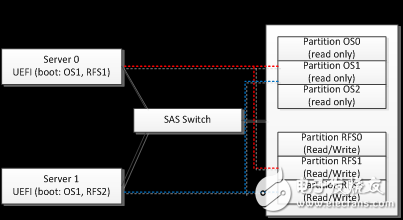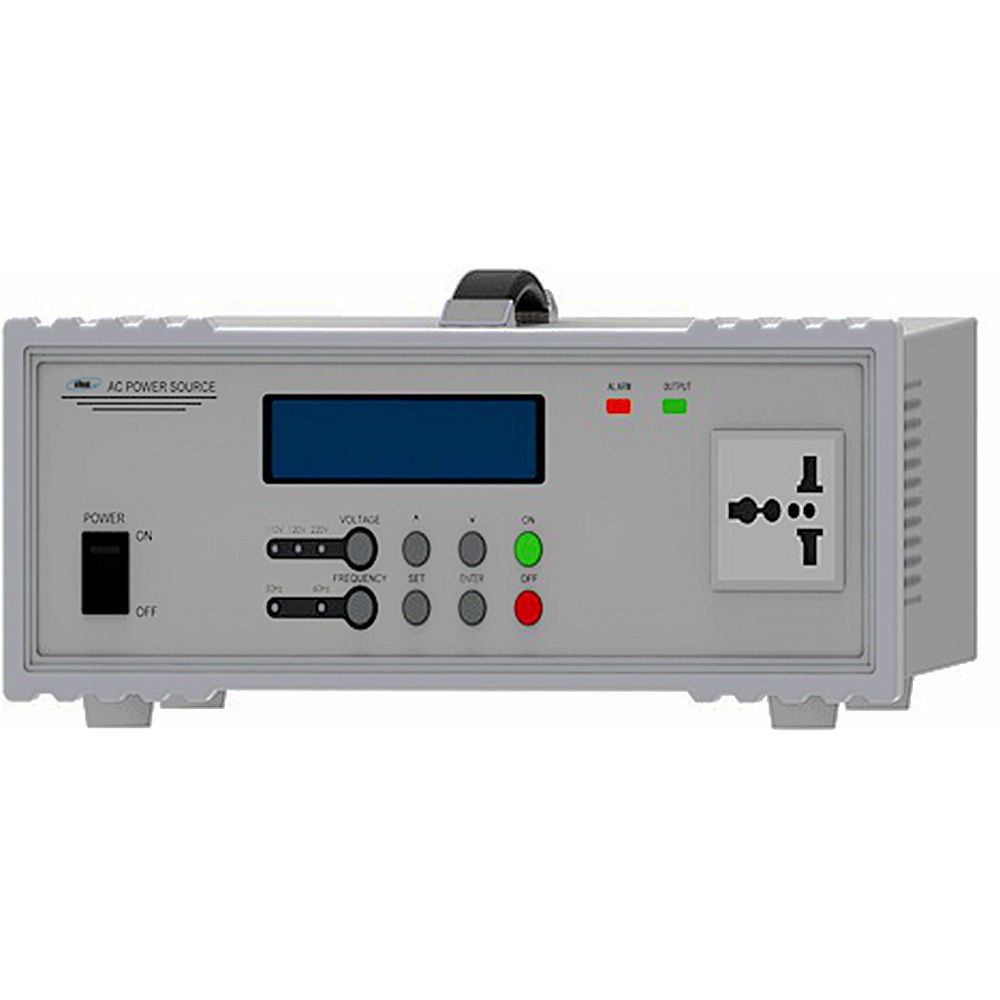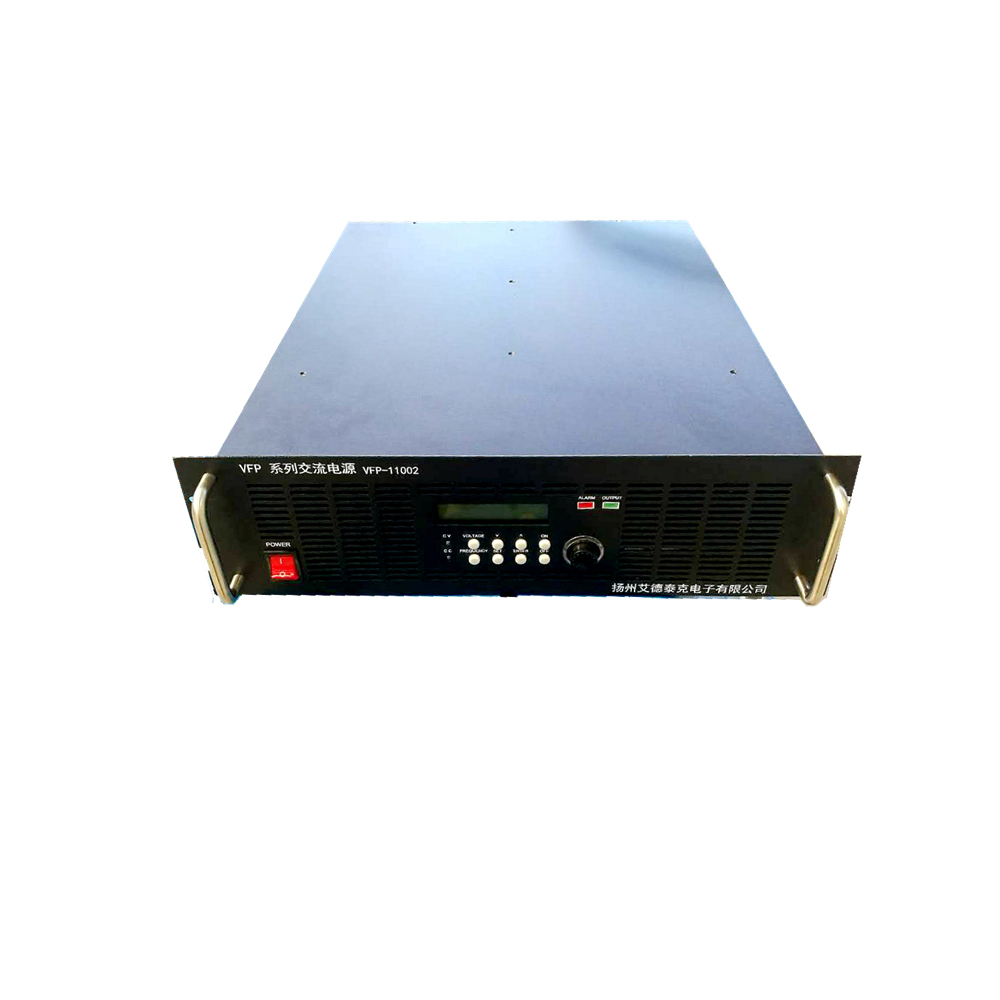Optimizing services on a SAS Switch-based architecture offers an efficient way to manage shared boot disks. Each server in a cluster typically requires a volume for the operating system, along with virtual swap space and a root file system. The OS image is usually read-only, while the root file system is often writable and specific to each machine. In large-scale environments, multiple servers may use the same OS image, making it ideal for sharing. Managing these volumes across hundreds of nodes can be costly and complex. A reliable, cost-effective, and easy-to-manage shared boot solution is essential.
With SAS Switch, we can implement shared boot volumes at the physical disk level. By using one or two high-performance disks (like SAS SSDs) with hot backup, we can create multiple partitions. One type of partition stores a static OS image, supporting different OS versions. Another type holds the individual root file system for each server. These disks are connected via the SAS Switch topology, allowing all necessary servers to access them during boot. On the server side, a UEFI BIOS application is required to configure and access the shared boot disk, including locating the OS image and root file system from specific partitions.

In the example, two servers (Server 0 and Server 1) share a single boot disk through the SAS Switch. Server 0 uses OS Partition 1 and has its own RFS1 partition, while Server 1 uses the same OS partition but has a separate RFS2. This setup ensures that each server operates independently without interference. However, this approach introduces a single point of failure. If the shared boot disk fails, the entire cluster could go down.
To improve reliability, multiple shared boot disks can be deployed. For instance, each server can have access to three boot disks, configured across different fault domains—such as different JBODs or racks. The UEFI boot application can automatically switch to a working disk if the primary one fails, ensuring continuous operation. This redundancy significantly enhances system resilience.
Using a shared boot disk not only reduces hardware costs by eliminating the need for individual boot drives but also simplifies management. Upgrades to the OS or applications can be done centrally, without having to update each server individually. If a server fails, it can be replaced without reinstalling the OS, saving time and reducing downtime. These benefits make shared boot disk solutions particularly valuable in large-scale data centers.
**Flexible Migration and Protection of Dynamic Services**Within a SAS Switch domain, all storage nodes can access any storage resource, enabling flexible migration and protection of dynamic services. This capability allows workloads to be moved efficiently between servers, improving resource utilization and system resilience.
Take a Hadoop cluster as an example. Initially, 10 servers and 20 data disks are set up, with two HDFS data disks per server. Through monitoring, it's found that CPU usage efficiency is low, at just 18%. The management layer can then reconfigure the cluster by reducing the number of compute nodes to two and redistributing the 20 HDFS disks across them. This change is implemented through the SAS Switch, allowing the Hadoop service to remain online during the process. The freed-up resources can then be used for other tasks or placed in a power-saving state.
For high-reliability services, the SAS Switch can support protection mechanisms like 1:1 or N:1 failover. When a node fails, its workload is automatically transferred to an idle server, and the storage resources are reassigned. This ensures continuous service delivery without disruption, even during failures.
**Hyper-Converged Storage**Hyper-converged storage has gained significant attention, with companies like Nutanix and VMware vSAN leading the market. This technology is reshaping traditional storage systems by integrating compute and storage into a single platform. It eliminates the need for dedicated storage networks and hardware, offering a more scalable and cost-effective solution.
The key features include using standard servers instead of dedicated storage hardware, pooling direct-attached storage (DAS) resources, and running both storage and application workloads on the same node. While this seems to eliminate the need for storage fabrics, many hyper-converged implementations still rely on technologies like SAS Switch to enable efficient resource sharing and management.
There are several reasons for this trend. First, moving disks to cheaper JBODs reduces the overall cost of server nodes, increasing density and flexibility. Second, since applications and storage run on the same CPU, optimizing for specific workloads often requires separating compute and storage resources. Third, multi-tenant environments demand physical isolation of data, which can be easily achieved using SAS Switch-based architectures.
In conclusion, SAS Switch technology has proven its value in modern data centers, enabling efficient storage pooling and decoupling. As seen in China’s Tianzhu 2.0 rack, this approach is driving advancements in cloud infrastructure, making it more scalable, flexible, and cost-effective. With growing adoption by global vendors, SAS Switch is becoming a key enabler of next-generation storage solutions.
High Frequency AC Power Supplies
High Frequency Variable frequency AC power supply converts AC electric to pure sine waveform by through AC – DC – AC conversion, which is different from variable frequency speed controller and common AC voltage regulator.


VFP-H series variable frequency power supply is manufactured under SPWM mode; it is designed by MOSFET module as active component, and adopts other technologies as digital frequency division, D/A conversion, instantaneous feedback and sinusoidal pulse width modulation to make the capacity of single unit up to 150KVA. Isolated transformer used to enhance total stability, strong load applicability, high quality output waveform, and simple operation, small size and light weight. In addition, this power supply has many protective functions against short circuit, over current, over load and over heat to ensure proper operation.
Comparing to traditional frequency inverter power supply, our inverter power supply removes the transformer and frequency converter, by using pure high-frequency conversion technology, with built-in by AC/DC and DC/AC parts, our AC inverter power supply could give stable AC output with prefect output precision.
Because, our new technology does not need transformer for conversion and isolation, the power supply size can be reduced within the same output power rating, and not limited by the transformer, output frequency could reach 15 ~ 1Khz continuously adjustable.
High Frequency AC Power Sources, AC High Frequency Power Supplies, High Frequency AC Sources, AC Power Sources, AC Power Supplies
Yangzhou IdealTek Electronics Co., Ltd. , https://www.idealtekpower.com